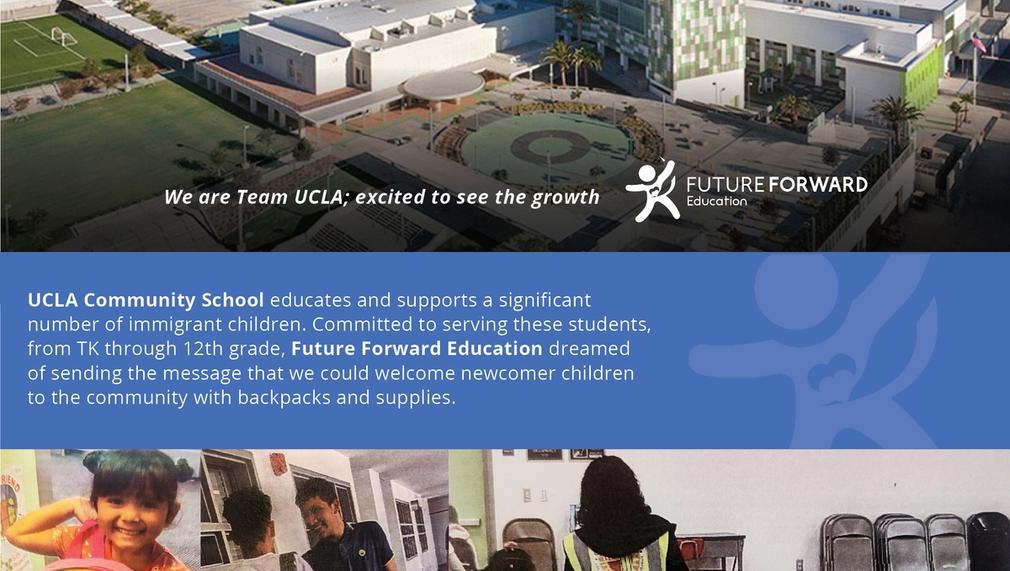Time For Educational Progress
We want to create a better learning experience for our youth.
Through years of research and creating methods of system-level solutions, our work toward student success evolves but we are aware that perhaps we will need to develop more direct access to achieve the goal of greater student outcomes.
With this knowledge, we are aiming to develop new approaches to some of our communities largest issues in the system of education, even if that means building "privatized" systems that improve academic transactions within the current landscape.

What is the primary issue area that your application will impact?
K-12 STEAM education
In what stage of innovation is this project, program, or initiative?
Expand existing project, program, or initiative (expanding and continuing ongoing, successful work)
What is your understanding of the issue that you are seeking to address?
Population:
Using the Nation's second largest school district as an example, LAUSD, the population takes any standard classroom issue and amplifies it. According to recent data, the average classroom size is 25-35 students which means the amount of reach in terms of support for each student is greatly diminished. We have a ratio crisis among the number of educators-to-students and/or other supports-to students and many students are overlooked because of it.
Due to the need to satisfy this population, there are measures (at times, unconventional) being taken to fulfill a students journey through the system. In order to make room for the many upcoming students, the current students are pushed through the system whether they truly pass or not.
Governance:
Another issue is the layers of bureaucracy and governance that sits between the external sources and the students, preventing classroom-level experts unable to practice pedagogy more freely.
Describe the project, program, or initiative this grant will support to address the issue.
Across the public academic landscape, we have to understand that the student body is an extremely dynamic population and therefore we must learn to produce dynamic solutions as to evolve with the student. The No Child Left Behind Act, which introduced an overhaul of school testing and aimed to make schools accountable for improving scores, created a system that tracks progress solely by memorization, rather than actual learning.
External sources, such as nonprofits and other youth and community organizations, can gain a lot more flexibility through the "privatization" of educational functions and environments. Being able conceptualize and develop solutions that are less constricted by a government body, means we can bend a status quo and alter the stagnation that sits in the system today (and decades prior).
The concept of a school entity independent of the public system, combined with our research and ongoing further assessments, might be better practiced in incremental phases. In the long term, outside of the governance, it can give us flexibility, speed and effective out-of-the-box solutions for our youth. For this, we need backing to support a partnership effort with local schools, universities and the development of an "interim" program in which we can absorb the classroom climate, its teachers and its students, so we can better align ourselves with a future-thinking model of classroom prototyping.
Describe how Los Angeles County will be different if your work is successful.
Los Angeles County is home to a very wide range of unique individuals; a level of diversity that can represent many parts of the world yet compacted into one region. In Los Angeles County, we can experience a multitude of societal issues that form adversity and inequity for many families. These families are the building blocks and foundation in which the rest of the community sits on and is enough reason for us to put the spotlight on such a foundation as to focus on rebuilding our roots as a community.
Imagine if we were to develop alternate solutions to the academic landscape, one of the most important systems within our community, that alters and enhances the learning experience for our youth. This is not just for them, it's for all of us. We believe that by focusing on this one system, we then are able to focus on all the systems that sit above it. This resonates with all of us as we inherit what that academic foundation produces.
Educational progress is for all of us.
What evidence do you have that this project, program, or initiative is or will be successful, and how will you define and measure success?
This is a proposed early-stage project and we rely on data, research and analysis to validate what we aim to do. Our primary target audience, being students, is where we focus much of our efforts in terms of measurement; we utilize surveys, data-collection from completed curricula/programs and pull reports from the California Dashboard, WeBudgetLA, LAUSD's Smarter Balanced Assessment Consortium and other sources to guide us to improving solutions. We also use this to enhance and scale programming for future efforts.
As an organization that wishes to improve learning outcomes, we are in the business of measuring progress among students and hope to build from our current process of data collection using the mentioned sources and develop our own solutions for tracking progress through the "science of learning" or "technology of teaching" (the concept of relying on science vs. a belief system to measure learning growth) to ensure that we can track a student's trajectory more appropriately.
Approximately how many people will be impacted by this project, program, or initiative?
Direct Impact: 5,000.0
Indirect Impact: 25,000.0